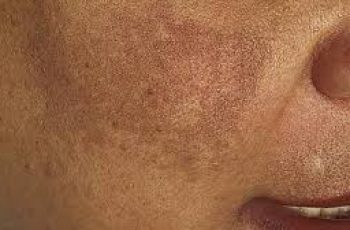Do I Need a Serum and a Moisturizer?
Many of my patients and Reddit followers alike often ask me this question: “Do I need to use a serum and a moisturizer, or can I pick one?” The answer for most people is yes, you do need both a serum and moisturizer. However, there are a few skin types that can get away with just using a serum alone. In this guide, I will walk you through the differences between serums and moisturizers, as well as how best to incorporate them both into your skin care regimen based on your skin type.
First, if you don’t already know your skin type, take the quiz to find out so you will know which advice to follow.
Take the Quiz
Most skin types need a serum and a moisturizer.
Very oily types can get away with only using a serum.
Layer serums under moisturizers to increase absorption and efficacy.
Table of content
serum vs moisturizer
Serum vs. Moisturizer: What’s the Difference?
Serums and moisturizers are often confused because they sometimes have a similar consistency. However, they are two different products with different goals. Serums are lightweight skin care products that contain concentrated active ingredients to treat a specific skin concern. Skin-brightening serums, for example, might contain vitamin C, kojic acid, and other lightening ingredients, while an anti-aging serum may contain ingredients like growth factors, exosomes, and peptides. The best serum for you will depend on both your skin type and the skin concerns you are looking to treat.
Moisturizers, on the other hand, tend to be thicker than serums and contain ingredients that hydrate and seal moisture into the skin. Barrier repair moisturizers go a step further and mimic the skin’s natural lipid structure to strengthen its natural barrier, which not only keeps moisture in but also keeps irritants and allergens out. While some serums may contain hydrating ingredients, most do not contain this special 1:1:1 ratio of lipids to directly target skin barrier function.
Thus, you use serums to deliver active ingredients that target a specific skin concern, and moisturizers to hydrate and protect the skin.
Benefits of Serums
Deliver concentrated active ingredients directly to the skin
Target specific concerns like acne, dark spots, and fine lines
Lightweight texture, making them suitable for layering
Available for all skin types and concerns
Benefits of Moisturizers
Hydrate the skin and prevent dryness
Reinforce the skin’s protective barrier
Provide occlusion
Increase the absorption of serums and other skin care products
Some include additional ingredients to reduce redness and inflammation
When to combine serums and moisturizers
When to Combine Serums and Moisturizers
Because serums and moisturizers are used for two distinct purposes, most skin types should use both a serum and a moisturizer. The best way to do this and which specific products to use will depend on your skin type.
Dry Skin Types
If you are a dry type, you need a barrier repair moisturizer and a serum. A barrier repair moisturizer will help to restore the right ratio of lipids that your skin needs in order to have a healthy skin barrier . It will also help to increase the absorption of your serum when placed on top of the serum.
The serum you use will depend on which skin problem you are looking to target. There are many hydrating serums that can help to add extra moisture, as well as skin-brightening, anti-inflammatory, and anti-aging serums.
Some popular moisturizers and serums for dry skin include:
Oily Skin Types
Here is where the exception comes in: very oily skin types can get away with using a serum alone and may not need a moisturizer. However, slightly oily types or “combination” types will still benefit from a light moisturizer. Choose one that is more humectant-based than occlusive-based to avoid clogged pores and breakouts.
As with dry skin types, the right serum for oily skin depends on your specific skin concerns. Many oily skin types do well with antioxidant, skin-brightening, anti-aging, or skin-calming serums.
Some popular moisturizers and serums for oily skin include:
How to Layer Serums and Moisturizers
Serums are typically layered on the skin before moisturizers , as this helps to increase the absorption and penetration of the active ingredients in the serum. Applying a moisturizer before a serum will slow the absorption rate of the serum. In some cases, this may be advised if you are trying to gradually introduce your skin to a new ingredient. However, in most cases, serums should be applied before moisturizers.
Bottom Line
In most cases, you should use both a serum and a moisturizer. Serums deliver active ingredients to the deeper layers of skin to treat specific problems like dark spots, wrinkles, or redness, while moisturizers hydrate and protect the skin. When used together properly, the right moisturizer can help to enhance the effectiveness of your serum.
To choose the best serums and moisturizers for your skin, you must first know which of the 16 skin types you are. Once you know your skin type, we can help you create a customized skin care regimen that’s a perfect match for your skin’s unique needs.
DQH Can I use salicylic acid first and then vitamin C?
It’s easy to create a skincare routine, but knowing how to use it is another thing entirely. In most cases, if you’re not getting the desired skin results, it could be due to the layering of conflicting ingredients. So, is it possible that salicylic acid and vitamin C are such ingredients? Or are these active ingredients the duo that’s been missing from your skincare routine? If you want answers, stick around because today we are going to explain the benefits of salicylic acid and vitamin C and how they can be used in your daily life.
What are the benefits of salicylic acid for skin?
Salicylic acid is one of the most commonly used beta hydroxy acids and is favored by many people with oily, acne-prone skin. This acid is derived from willow bark, and unlike its water-soluble relatives (called alpha-hydroxy acids), salicylic acid is oil-soluble, which means it can penetrate deeper into the lower layers of the skin. Once it reaches the lower layers, it can help unclog pores of excess sebum, dirt, bacteria, debris, and impurities. This results in clearer skin tones and greater definition.
Not only does salicylic acid benefit the underlying layers, but the outer surface of the skin benefits as well. When applied to the skin, salicylic acid removes the buildup of dead skin cells. This is accomplished by breaking the bonds that hold dead cells to the surface. Over time, this can cause the complexion to look dull and prone to acne, blackheads, and other blemishes.
If you’d like to learn more about salicylic acid and how it can improve your skin, check out this dedicated blog post from a beauty insider.
What are the benefits of vitamin C for skin?
Vitamin C is considered one of the most powerful antioxidants, which means it is very effective at fighting free radicals and preventing them from causing further skin damage. Examples of free radicals include pollution, central heating, UV rays and harsh climate. They attack proteins, fats and cell membranes as soon as they come into contact with the skin, causing signs of premature aging such as fine lines and wrinkles as well as hyperpigmentation, flaky patches of skin and loss of elasticity.
Many people usually prefer to use vitamin C in their morning routine as this ingredient gives the complexion a radiant glow. You’ll also find that vitamin C can target areas of hyperpigmentation, plumping the skin and reducing the appearance of fine lines and wrinkles.
The thing about vitamin C is that there are a lot of outdated studies going back to the 1950s that describe vitamin C as an unstable skin component. Thanks to improvements in modern technology, this is no longer the case as all products now contain a stable form of vitamin C.
Visit The Beauty Insider to learn more about vitamin C. So please check out our blog post.
Can I use salicylic acid first and then vitamin C?
Yes, you absolutely can. In fact, it’s thought that using salicylic acid before using vitamin C ensures it penetrates faster and works faster.
This is an efficient way to utilize two power sources, and the reason has to do with pH. For example, the skin’s natural pH is about 4.7, making it slightly acidic. Salicylic acid and vitamin C are also both acidic, and you’ll find that vitamin C is absorbed quickly into the skin. Therefore, using salicylic acid beforehand can increase the acidity of the skin and allow vitamin C to penetrate into the skin faster.
While this is considered an effective way to combine two powerful ingredients, you need to be aware of your skin type and how it reacts to certain active ingredients. Even people with perfect, normal skin can experience skin sensitivity and irritation. Therefore, always consult a doctor or dermatologist before using any new products on your skin.
It’s also important to follow skin application rules. In this case, you need to use the product correctly to ensure you get the best results for your skin. If you’re not sure what I mean, the basic rule for skin is to start with the thinnest consistency and work your way up to the thickest consistency. This prevents a barrier from forming on the surface, preventing other active ingredients from penetrating the skin.
Can I use salicylic acid at night and vitamin C in the morning?
Yes, absolutely, this is considered the most effective way to get returns without any adverse side effects. This is because there is enough time between applications to ensure that the skin’s pH levels return to balance.
You’ll also find that Vitamin C is rich in antioxidants and is perfect for use in the morning to ensure your skin is protected and looking its healthiest. Due to the small size of salicylic acid molecules, it is an acid that is able to reach the deepest parts of the skin. While this is effective at keeping skin clear, it also increases the risk of irritation and photosensitivity. Therefore, many people prefer to use powerful BHAs in their evening routine without exposure to UV rays, pollution, or harsh weather.
Warning: If you avoid using sunscreen every day, none of these ingredients will do what your skin needs. The combination of chemical peels and powerful ingredients increases the risk of further damage to the skin’s surface. Use SPF 50 every day to keep your skin protected and your lipid barrier healthy, even on cloudy days, keeping your skin in top condition.



